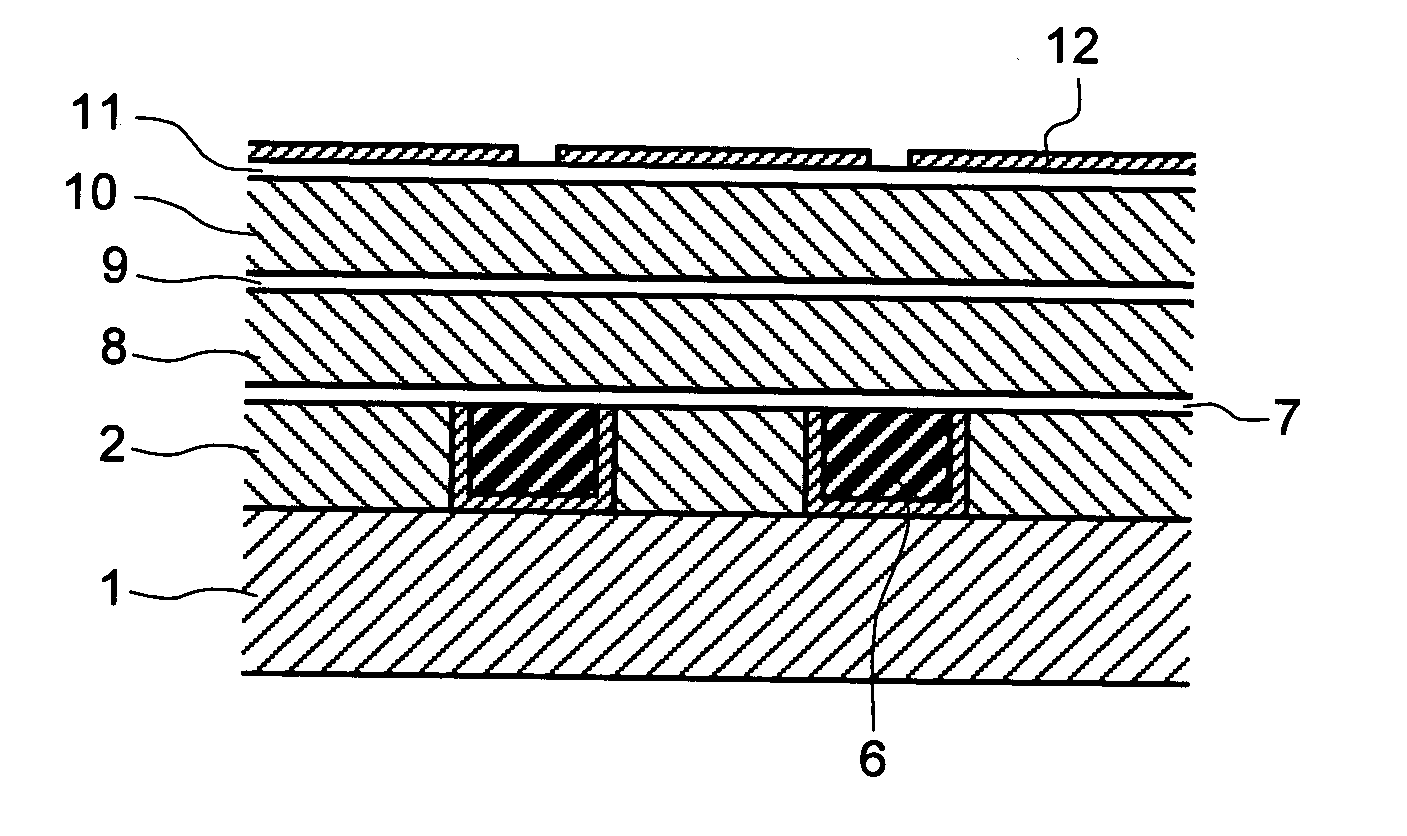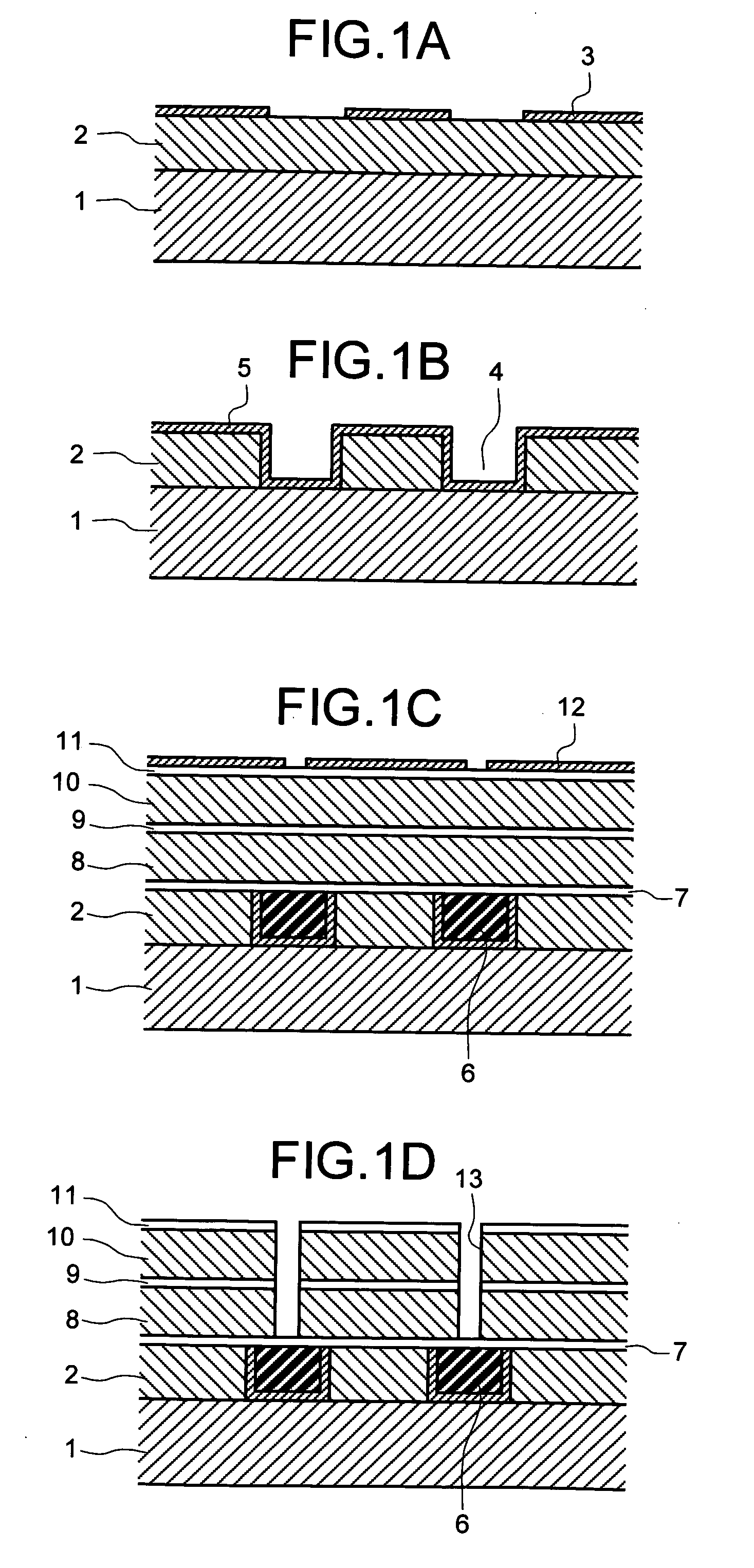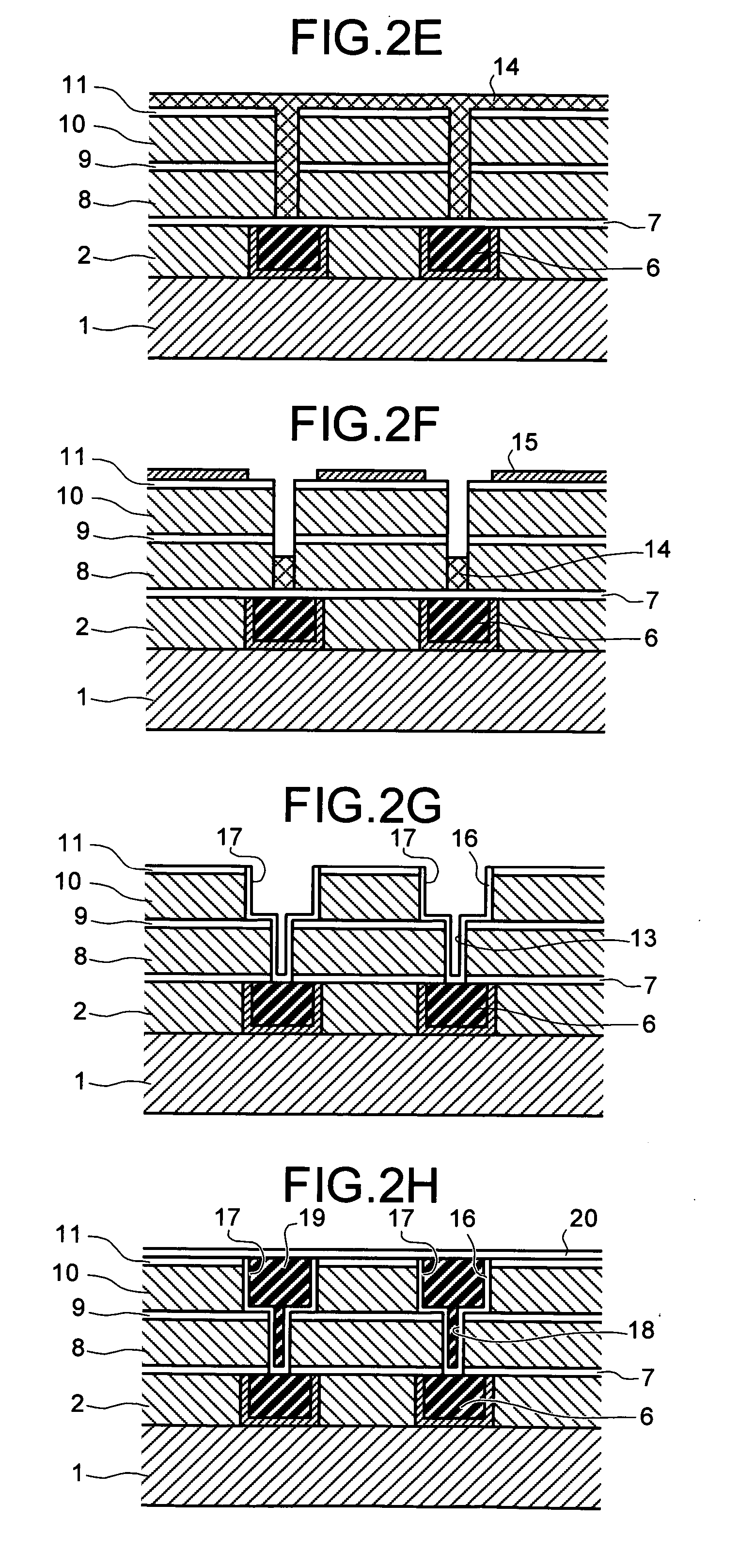Semiconductor multilayer wiring board and method of forming the same
- Summary
- Abstract
- Description
- Claims
- Application Information
AI Technical Summary
Benefits of technology
Problems solved by technology
Method used
Image
Examples
example 1
Formation of the Semiconductor Multilayer Wiring Board and its Property
[0106] A spin-on-glass coating solution (manufactured by Tokyo Ohka Kogyo Co., Ltd. under the trade name of OCD T-12 800) whose principal component is a hydrolysate of trialkoxysilane as an inorganic SOG material was applied to a silicon substrate for 20 seconds by a spinner at 2000 rpm. Then, the substrate was dried on a hot plate at 80° C. for 1 minute, at 150° C. for 1 minute, and then at 200° C. for 1 minute. Then, the substrate was subjected to a heat processing under a nitrogen atmosphere at 450° C. for 30 minutes to obtain a coating film having a film thickness of 400 nanometers. The dielectric constant of the obtained silica-based interlayer insulating film was 3.0.
[0107] In the silica-based interlayer insulating film, a wiring-layer forming space was formed through a dual damascene process. Then, the substrate having formed thereon the silica-based interlayer insulating film was irradiated with an ultr...
examples 2 and 3
Evaluation of the Anti-Diffusion Property of the Anti-Diffusion Film in the Semiconductor Multilayer Wiring Board According to the Present Invention
[0114] The spin-on-glass coating solution (manufactured by Tokyo Ohka Kogyo Co., Ltd. under the trade name of OCD T-12 800) was used as an inorganic SOG-based material to form a silica-based interlayer insulating layer. Then, by using a helium (He) plasma irradiating process and an ultraviolet irradiating process as a process for forming the Si—OH bond on the surface of the silica-based interlayer insulating layer, pseudo-models of the semiconductor multilayer wiring boards of the present invention were formed in the following manner. With the use of the formed pseudo-models, the anti-diffusion property of the anti-diffusion film in the semiconductor multilayer wiring board according to the present invention was evaluated. Although this pseudo-model did not include a wiring forming space, the anti-diffusion film in this pseudo-model was...
examples 4 and 5
Evaluation of the Anti-Diffusion Property of the Anti-Diffusion Film in the Semiconductor Multilayer Wiring Board According to the Present Invention
[0122] A spin-on-glass coating solution (manufactured by Tokyo Ohka Kogyo Co., Ltd. under the trade name of OCD T-9) whose principal component is a hydrolysate of methyltrialkoxysilane was used as an organic SOG-based material. Then, a process of forming the Si—OH bond on the surface of the silica-based interlayer insulating film was performed in the same manner as in Examples 2 and 3 except that an ultraviolet-ray irradiating process was the irradiation for 1 minute of an ultraviolet ray including a far-ultraviolet ray of 185 to 254 nanometers in the ambient atmosphere, thereby forming pseudo-models 3 and 4 of the semiconductor multilayer wiring boards of the present invention.
[0123] The obtained pseudo-models 3 and 4 of the semiconductor multilayer wiring boards of the present invention were subjected to annealing under a vacuum atmo...
PUM
| Property | Measurement | Unit |
|---|---|---|
| Electrical resistance | aaaaa | aaaaa |
| Dielectric constant | aaaaa | aaaaa |
Abstract
Description
Claims
Application Information
 Login to View More
Login to View More - Generate Ideas
- Intellectual Property
- Life Sciences
- Materials
- Tech Scout
- Unparalleled Data Quality
- Higher Quality Content
- 60% Fewer Hallucinations
Browse by: Latest US Patents, China's latest patents, Technical Efficacy Thesaurus, Application Domain, Technology Topic, Popular Technical Reports.
© 2025 PatSnap. All rights reserved.Legal|Privacy policy|Modern Slavery Act Transparency Statement|Sitemap|About US| Contact US: help@patsnap.com



